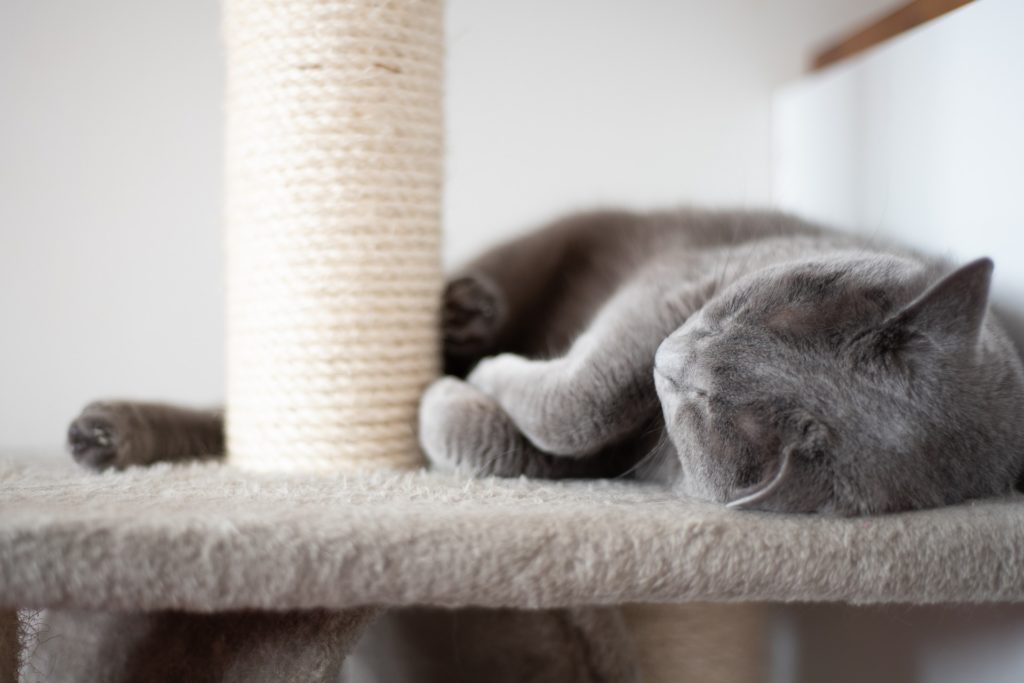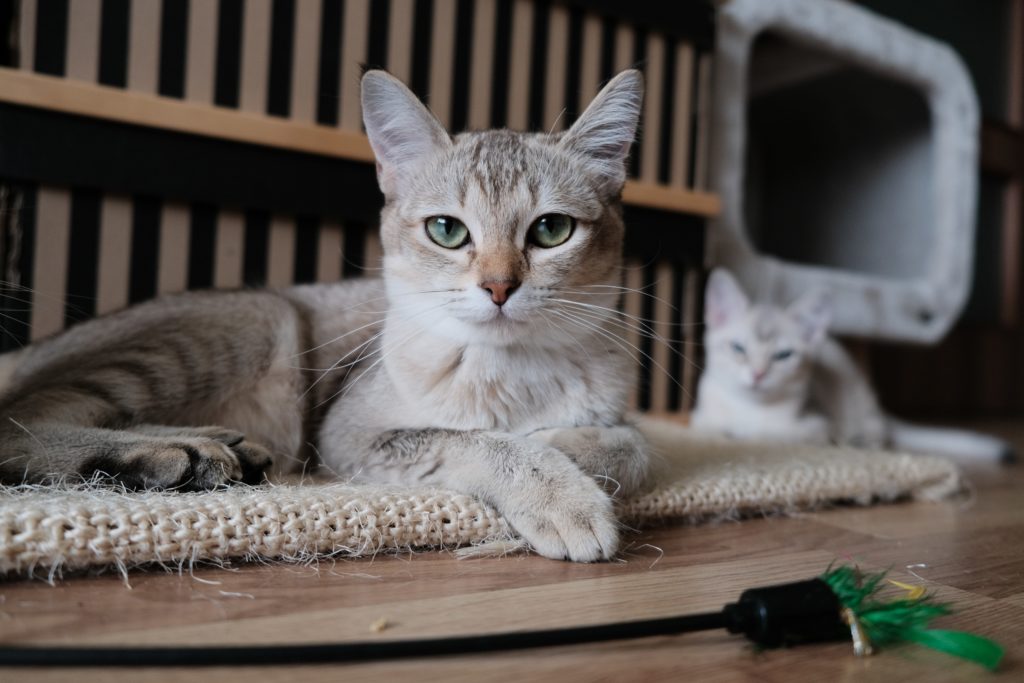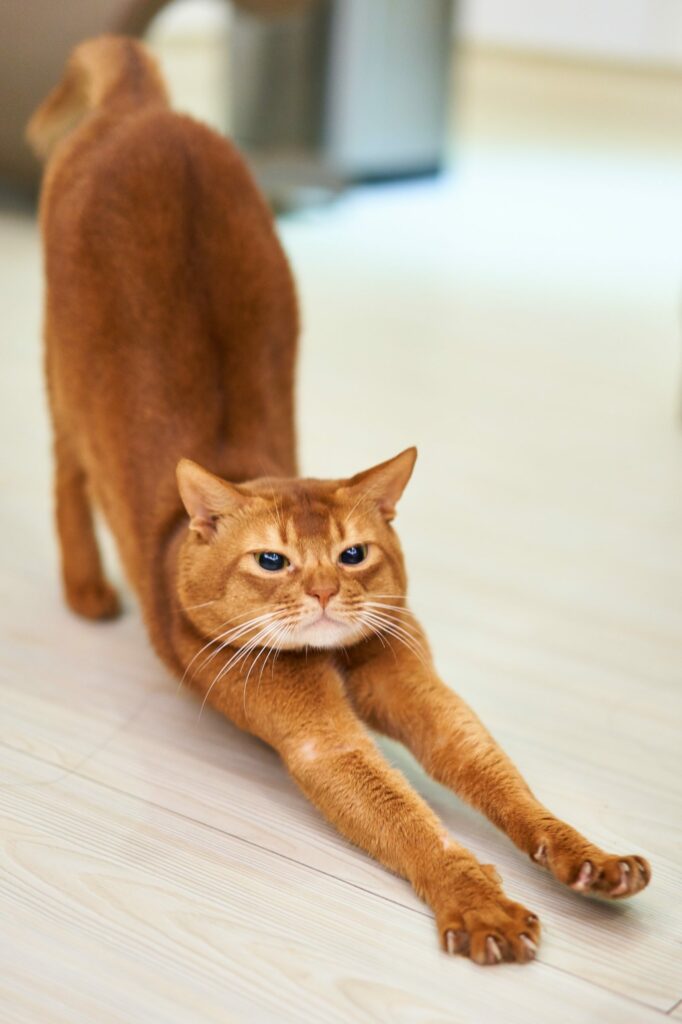If your cat has its claws out disproportionately, you should seek veterinary advice to see if it is a disease.
If your cat has its claws out all the time, this may be due to a disease and should be checked by a vet if it happens repeatedly. Usually your cat has its claws out to scratch or to hunt for prey.
Why do cats scratch in the first place?
Cats scratch to groom their claws and to mark their territory.
Especially with small young kittens, cat owners often feel the small claws of the cats during play. Catching the playful prey is very important for cats and sometimes gets so out of control that the little cats want to bite and scratch too much. Among cats this behaviour is not a problem, only for the cat owner it can become painful.
A scratching post is part of every good cat kit, because cats don’t just scratch the scratching post for pure pleasure, but also for very important reasons.
Cats need a scratching post in their home to mark their territory. By scratching on the scratching post, they leave certain scent marks and thus mark their territory for other cats.

In addition, your cat can keep an eye on its territory on the high scratching post and is informed about dangers in good time.
Your cat also scratches daily for personal hygiene, because the claws also need to be cleaned. The front paws are cleaned by scratching and the back paws are groomed with the tongue and teeth. Would you like to help your cat with its coat care? In our great article How do I groom a cat? we show you great tips on how to get your cat shiny again.
How do I get my cat onto the scratching post?
Here are a few tips to help you get your cat to accept the scratching post:
- Rub the cat tree with catnip. Cats love this very much and your cat won’t be able to avoid approaching the scratching post and licking the fresh catnip.
- Place your cat’s favourite toy on the scratching post. This will give your cat an incentive to approach the scratching post and climb it.
- Give your cat some treats on the scratching post. This can make the scratching post very appealing to your cat.
- You could also try using a fishing rod or a ball to get your cat close to the scratching post and then place the toy on top of the scratching post. Your cat will not be shy and will immediately repeat the toy.
- To introduce your cat to the scratching post, you can teach your cat to scratch the post. Under no circumstances should you take your cat’s paws and force it to scratch the sisal.
- If all attempts to make your cat like the scratching post fail, the problem may be with the scratching post itself. Try a larger scratching post, which your cat will hopefully accept better.
How do I get my cat to stop scratching?
Cats need a scratching post, a scratching tray or a scratching board to scratch.
Scratching is very important for cats and a very sensitive subject. They mark their territory by scratching and spreading certain scents. They also shorten and maintain their claws by scratching.

It is very understandable that your cat should not do this on the new sofa or wallpaper.
Make sure you offer your cat a scratching post that is a good height and in the right place. The scratching post should always be in the most public area and should be a good size for your cat to lie on and relax.
In addition to a scratching post, you can offer your cat a scratching board to stop it scratching the sofa, which is also very good for grooming its claws.
There are also scratching bins available in many shops. The scratching box consists of cave entrances and has very well padded lying surfaces inside.
What happens if my cat’s claws are too long?
If your cat’s claws are too long, it can lead to serious injuries to the paw.
If your cat’s claws are too long because your cat ignores the scratching post and does not trim its own claws, serious injuries could occur.
The claws that are too long could grow in and cause your cat a lot of pain, as there are a lot of nerve cells on the claws. As a result, your cat will try not to put any more weight on the injured paw, which can lead to misalignments when walking.
Likewise, if your cat’s claws are too long, they may break or split. As a result, the claws can no longer grow properly and this can lead to pain.
In addition, if your cat’s claws are too long, it can get caught on the carpet and cause serious injuries.
If your cat defecates on the carpet more often and what it means, we show you in our informative article Cat defecates on carpet.
What is the best way to cut cat claws?
Hold your cat firmly while you carefully trim its claws in the front area in the direction of growth.
If your cat is not used to having its claws trimmed, it is advisable to get two or four more helping hands.
The best time to cut your cat’s claws is when he is relaxed or very tired. This is usually after eating or when she comes to you to be petted anyway.
It is important to have everything ready before clipping so that you don’t have to get up or interrupt the process.
Hold the paw to be cut with one hand and the scissors with the other. Carefully cut only the front part of the claw. It is better to leave a little more on than to hit a sensitive area and cause the paw to bleed.
If the claw is retracted, you can make it visible again by pressing lightly on the pad between your index and middle fingers.
During the whole process of clipping, it is best to hold your cat well so that it has no chance of escaping.
Down below we have summarized our most popular posts for you in a great overview:
- Why do cats groom themselves after eating?
- Cat does not like treats
- How do cats cool off in the summer?
- How to keep ants out of the cat food
- Cat only wants to eat
- Do cats like it warm or cold?
- Is there food envy in cats
- How do cats cool off in the summer?
- How long does open wet cat food keep?
- Strange cat comes again and again
Summary – My cat always has its claws out
If your cat has its claws out disproportionately, you should seek veterinary advice to see if it is a disease.
If your cat has its claws out all the time, it may be due to a disease and should be examined by a vet if it has them out more than once. Usually your cat has its claws out to scratch or to hunt for prey.
Cats scratch to maintain their claws and to mark their territory.
To prevent your cat from constantly scratching the new sofa or carpet, your cat needs a scratching post, scratching tray or scratching board.
If your cat’s claws are too long, it can cause serious injuries to its paw.
Hold your cat firmly while you carefully trim its claws in the front area in the direction of growth.

